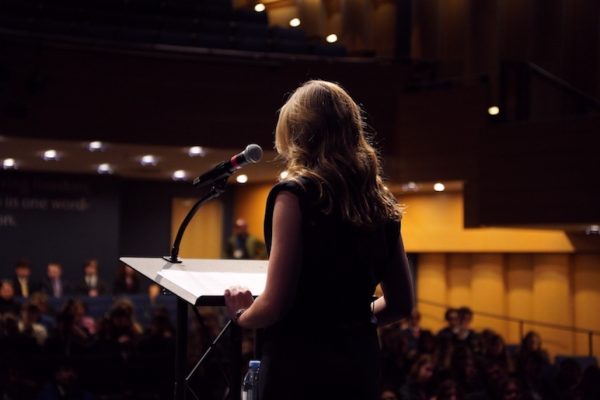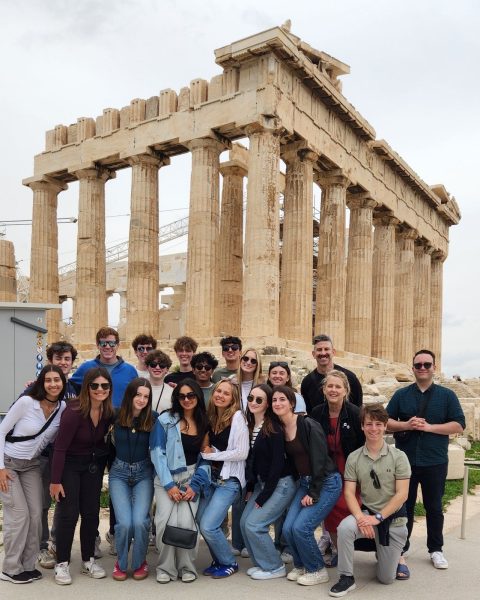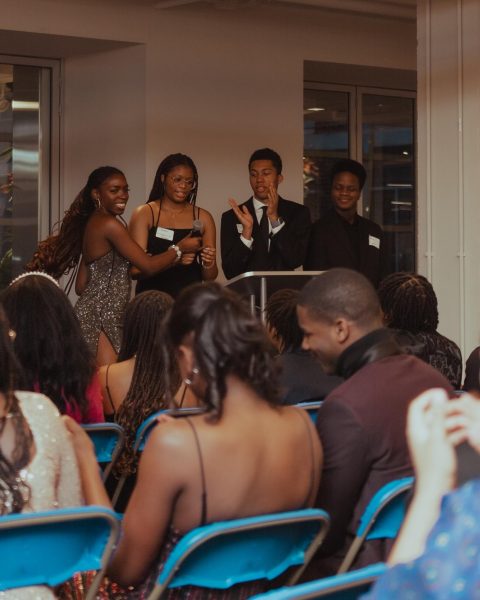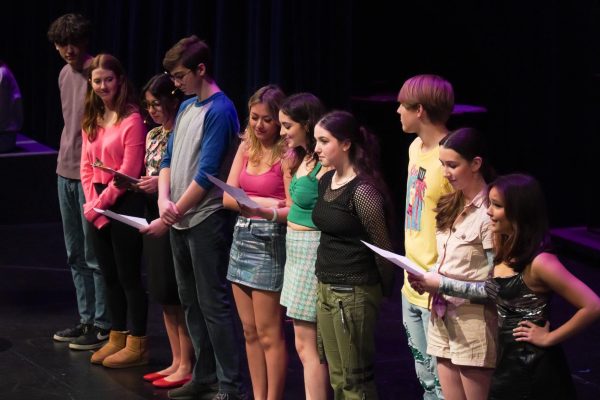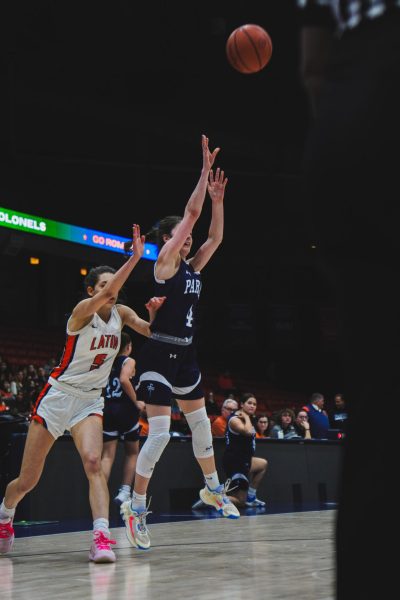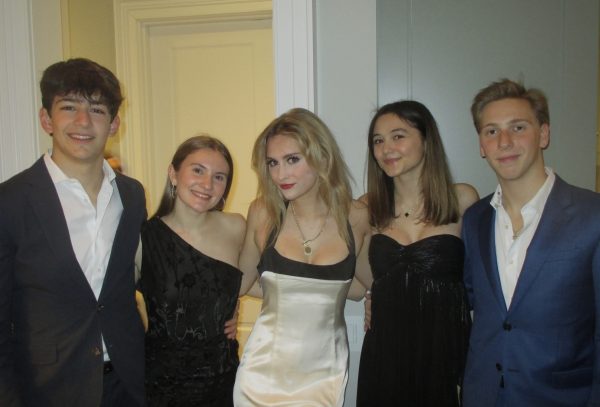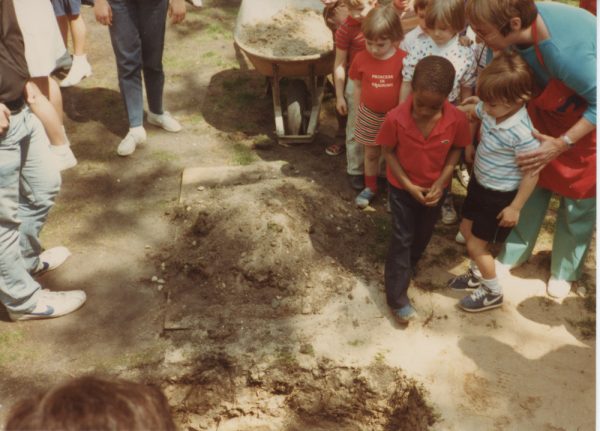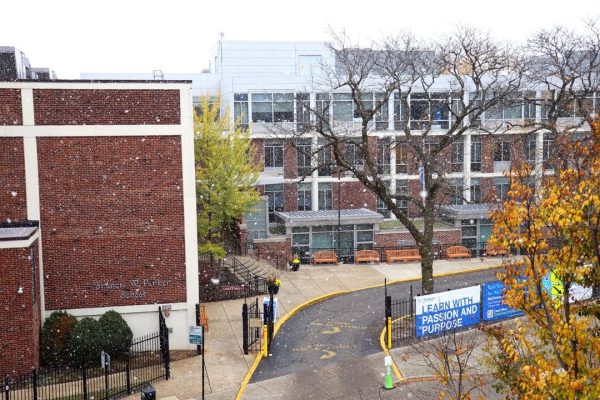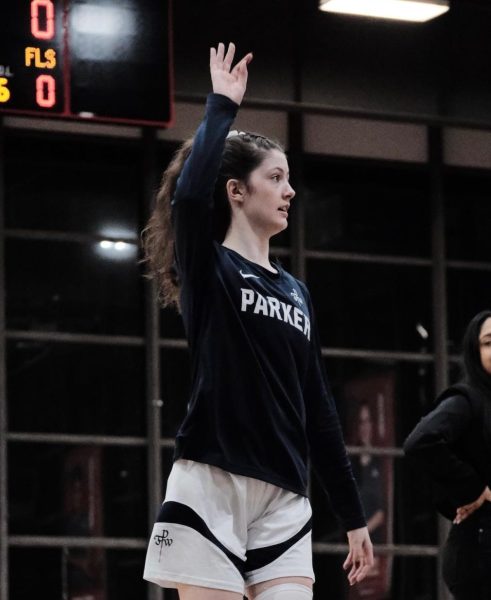Louder than Words
Parker Students Participate in the National Day of Silence
Red. Orange. Yellow. Green. Blue. Indigo. Violet.
After the sky turns an ominous grey color, and the clouds have shed their last drops of rain, an arc of vivid color paints the horizon. These rainbow colors, recited religiously by 1st graders around the country, symbolize the Pride flag, which reflects the diversity of the Gay Community. The same color spectrum could be found on April 27 on the wrists of 17 strong-willed Parker teenagers to mark the National Day of Silence. The students bore their rubber bracelets as armor, standing in strong solidarity with or the voices of the LGBTQ+ youth of America.
On April 25, senior Isobel Bender sent out an email introducing Parker students to the GLSEN Day of Silence. “Yes, it’s difficult and not easy, and sort of annoying to be silent for the whole day, but it’s supposed to be a challenge,” Bender said. “It is created to make you think about how others feel every day of their lives—- silenced.”
And so the seventeen Parker students, along with hundreds of thousands of students across the country, participated in the 23rd annual Day of Silence, inspired by GLSEN, an organization which strives to create safe and inclusive schools for all people, regardless of sexual orientation, gender identity, or gender expression.
“The point was to raise awareness,” freshman Carter Wagner said. “When you have 17 students who aren’t talking, people realize that this is something that needs to be addressed.”
The GLSEN Day of Silence—-with support from 12,000 student organizers from every state, and hundreds of thousands of students participants from over 5,000 schools—- is the largest annual student-led movement addressing issues of LGBTQ equality. According to senior Jolie Davidson, “The purpose of the Day of Silence is for students to stand in solidarity with LGBT youth who feel shamed or bullied into silence. Throughout the United States, even in our school, there are plenty of students who feel like they can’t fully express all aspects of their identity.”
Sophomore Raven Rothkopf felt compelled to participate. “The day of silence is recognizing that LGBTQ+ people feel silenced constantly in their schools and workplaces,” Rothkopf said. “They feel, even though we have had so much progression, that they cannot be themselves because of the bullying or discrimination that they may face.”
According to Bender, a third of LGBTQIA+ youth miss school because they feel unsafe, and an overwhelming nine out of ten LGBTQ+ students experience verbal harassment. In addition, LGBTQ+ youth are an astounding 5 times more likely to have attempted suicide compared to heterosexual youth.
“We got to see what it was actually like being silenced, Rothkopf said. “Not only were we supporting them, but spending the day in their shoes.”
GLSEN’s National School Climate Survey revealed that 85% of LGBTQ students have reported to experience verbal harassment in their K-12 school, and 80% don’t see positive LGBTQ representation in their curriculum. “At Parker, bullying still exists against LGBTQ+ people,” Wagner said. “During the day of silence, people were joking around about it a lot more than usual. In the future, I would like to see a direct connection expressed between the Day of Silence and the bullying that goes on against LGBTQ youth.”
As one can imagine, it was incredibly difficult for typically chatty high school students to remain tight lipped from 8:10am until 3:25 pm. “ I talk a lot in general, so it was very hard for me to stay silent,” Rothkopf said. “However, I was able to gain a new appreciation for the privilege I have. I only had to break silence once. In my chemistry class we were doing a lab, and I figured it would be a danger to my safety to remain silent.” Rothkopf was not the only participant to have felt compelled to break silence throughout the day.
Some students broke silence during classes that required partner participation during group projects. “All of my teachers were super accommodating,” sophomore Maddie Friedman said. “We had these notecards to pass out to people so that we could express, without words, what we were doing. Honestly, there was nothing but support. But, I wasn’t going to sacrifice my classwork.”
Others broke silence during choir classes, where students can truly recognize the value of their individual voices. And for a few, breaking silence came as a complete accident.
“It was weird not being able to communicate with my friends as I usually would,” sophomore Anjali Chandel who did not participate in the Day of Silence said. “We had to communicate through charades sometimes, mouthing words, or even texting.”
Rothkopf called the day “a success.” “People would come up to me and ask me what I was doing,” she said, “and I got the opportunity to educate them on something that they otherwise may never have learned.”
Others believed that the day would not yield lasting results. “I don’t know if this is something I would do again,” Friedman said. “ I don’t know how much staying silent actually made a difference.”
In Wagner’s view, Parker is not absolved from issues surrounding LGBTQ+ youth. “There are very few people that are outwardly homophobic—-people who think being gay is wrong,” Wagner said. “The biggest issue is that socially, we tend to use ‘gay’ as a bad word, or make fun of someone because they are gay. The culture needs to be changed.”



